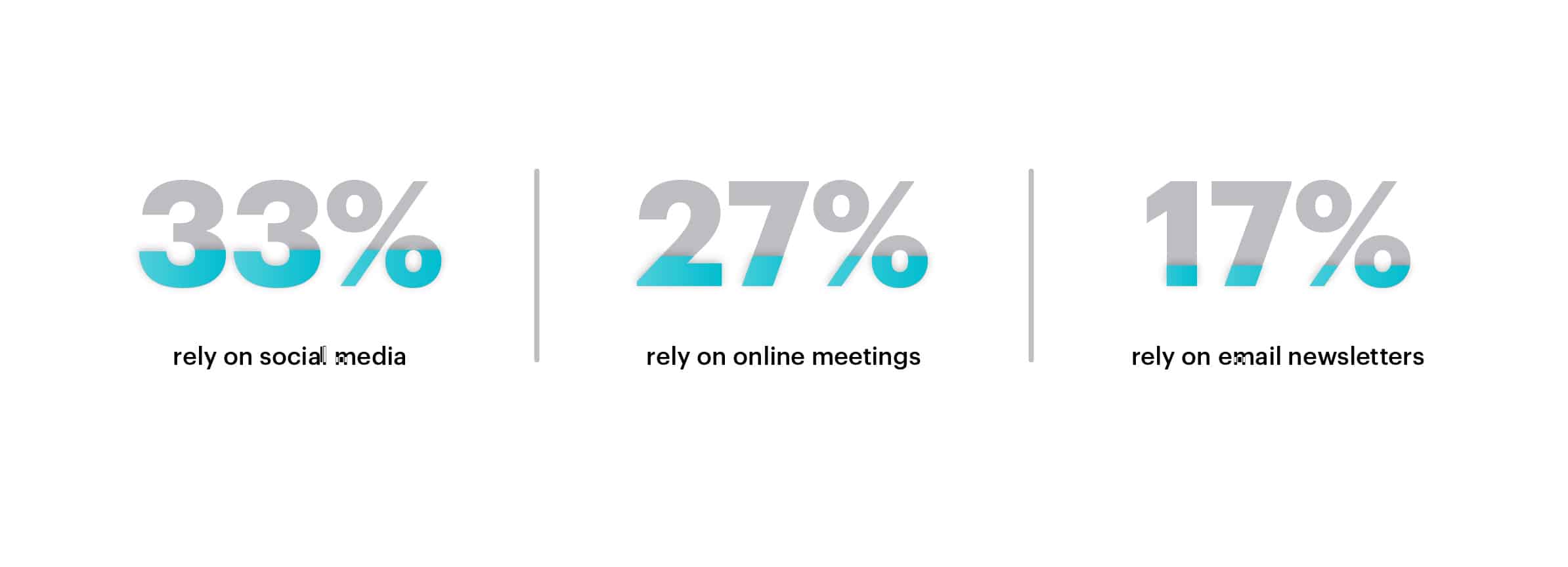Data & AI
CM Commerce Research: How COVID‑19 Affects Store Owners, February vs. June 2020
July 14, 2020

Back in February 2020, CM Commerce wanted to know how much time store owners were spending on specific areas of their business, what worked, and what didn’t. The team set up a survey, collated the data, built graphs, and shared analysis.
But in a matter of weeks, the pandemic had impacted the way people live their lives, especially how they shop. As cities began to implement lockdowns and regulations for sheltering at home, businesses were forced to shut their doors and adapt how they operate.
The original data from CM Commerce forms a snapshot of how ecommerce stores were operating in February, right before businesses began to feel the full effects of COVID-19.
Revisiting the same questions four months later, the team was able to track how the coronavirus has changed store owners’ roles and responsibilities, goals, even the outlook of their business as the global pandemic continues to develop.
1. IT concerns Are Playing a Much Larger Role in Ecommerce Stores Than They Were Before COVID-19
Before COVID-19, IT — ensuring technology works correctly such as ESPs, video conferencing tools, shop platforms, etc. — wasn’t high on a store owner’s priority list. But these days, IT is not only their highest priority, but also what they see as their biggest key to success and the number one task they’re responsible for on a daily basis.
According to 27% of store owners, IT is the top priority.
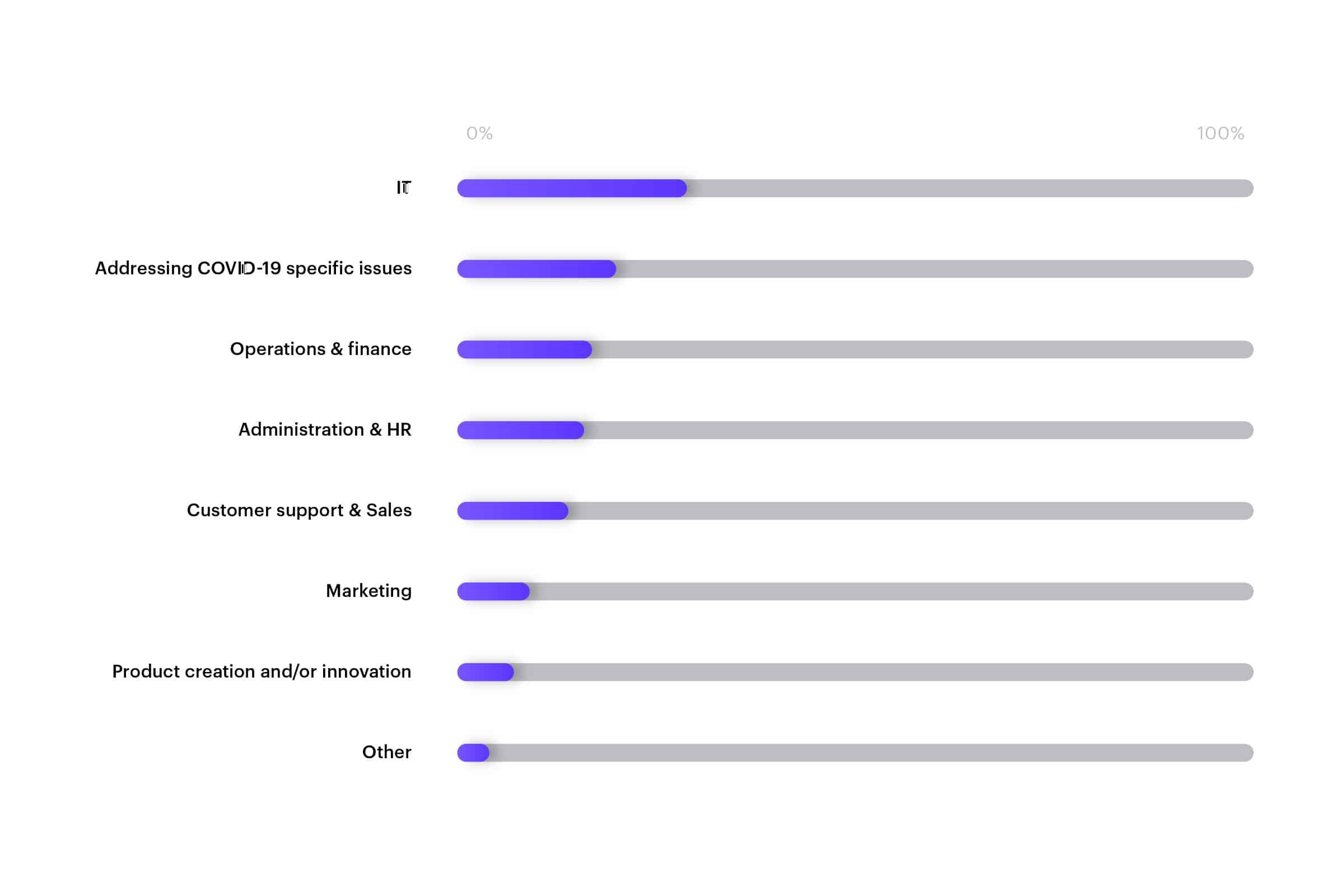
When asked what roles they’re primarily responsible for, store owners in February said finance. By June, the answer had changed to IT.
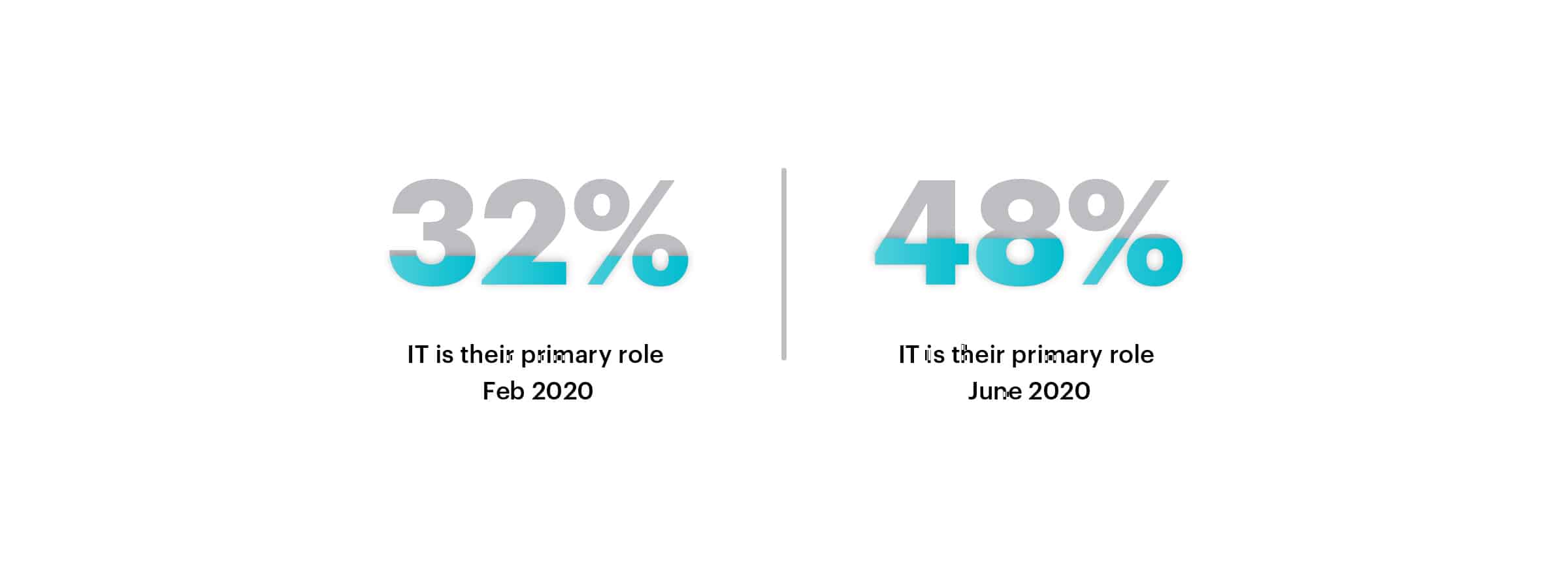
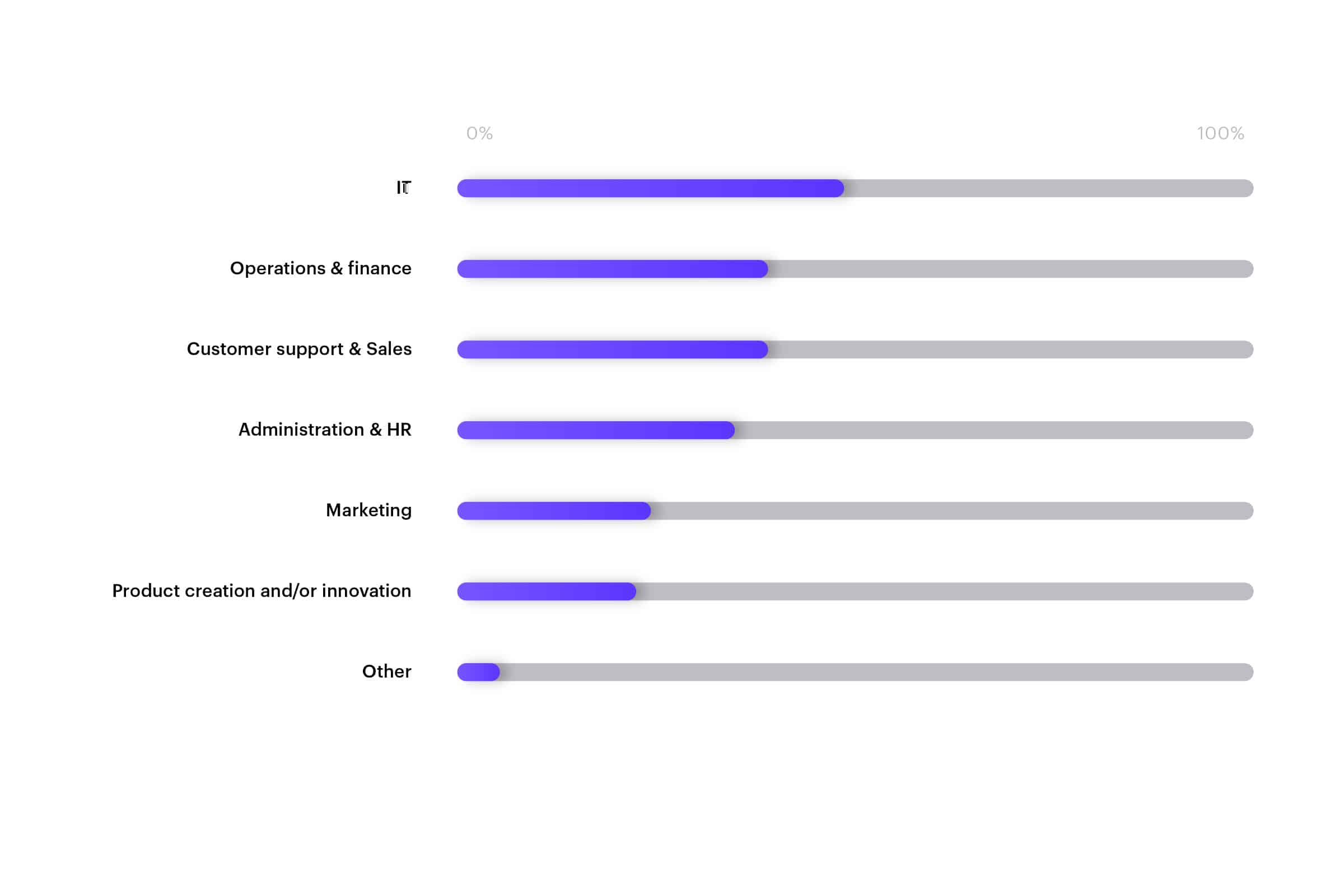
30% of respondents said that IT would be their biggest key to success in 2020, compared to only 9% who chose IT before COVID-19.
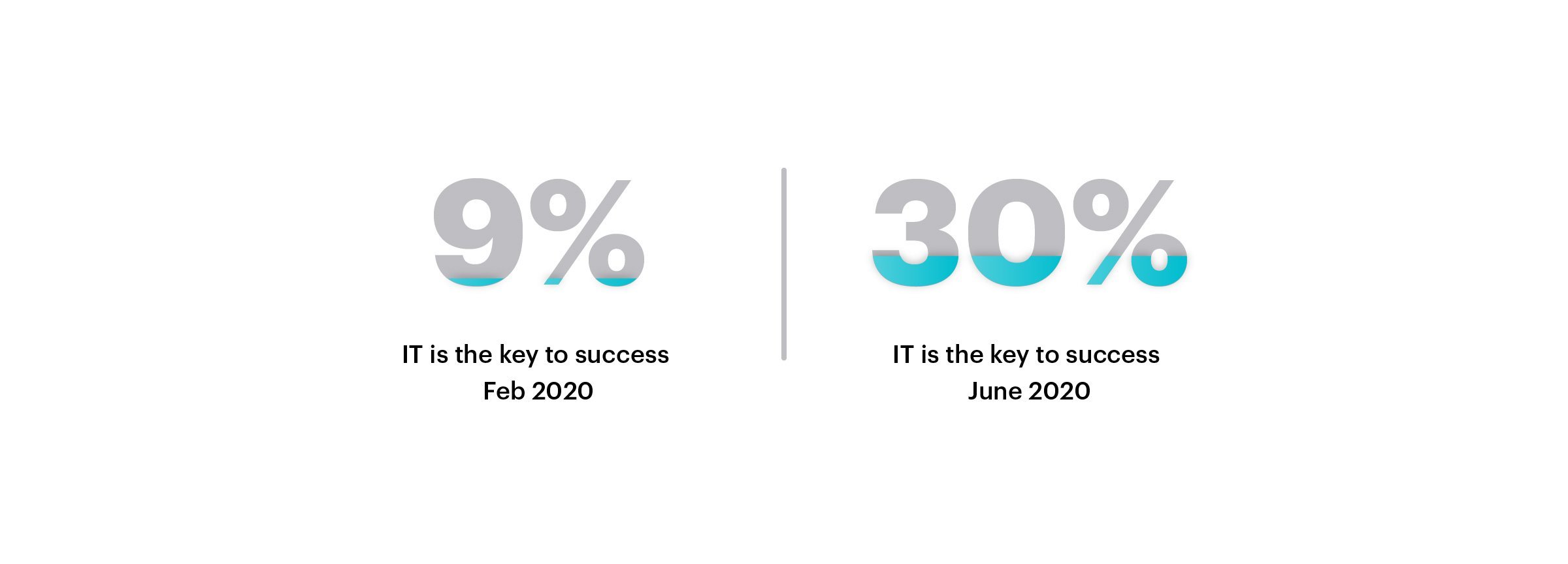
2. More Store Owners Are Conducting All of Their Business Online
The emphasis on technology makes sense considering how much of their business is being conducted online. Before COVID-19, the majority of respondents said 26 to 50% of their business happened online. But by June 2020, the majority said 51 to 70% of their business happened online.
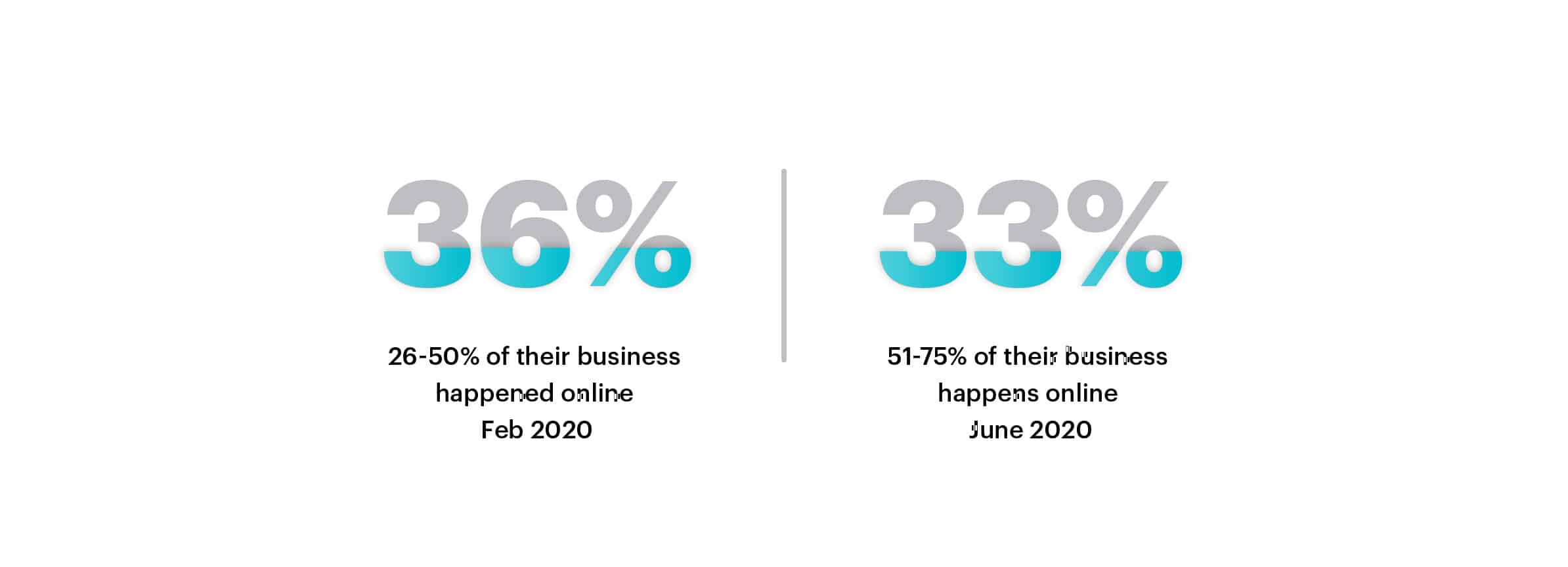
Similarly, for 43% of store owners surveyed, the biggest change these store owners have experienced since the spread of COVID-19 is operating 100% online.
3. COVID-19 Has Changed Store Owners’ Initiatives for the Rest of 2020
Surprisingly, COVID-19 does not seem to have dramatically disrupted store owners by forcing them to postpone certain initiatives. When CM Commerce asked store owners why they were not pursuing certain goals for 2020, their responses were evenly split when it came to citing COVID-19 as the reason why.
According to store owners, COVID-19 was even less of a factor when it came to choosing their goals for 2020, especially for low-cost investments such as growing a social media following. What might be more surprising is the amount of store owners still pursuing high-investment goals such as launching new products.
The top three initiatives respondents said they were not pursuing:
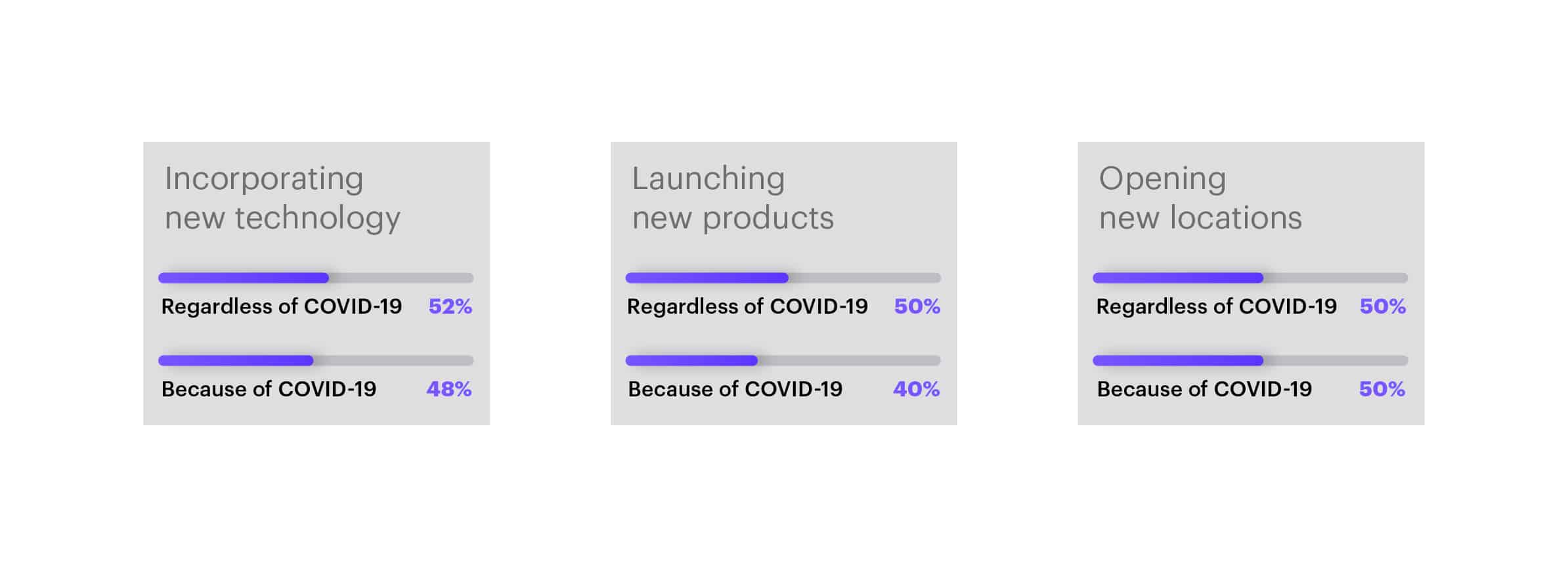
The top three initiatives respondents said they were pursuing:
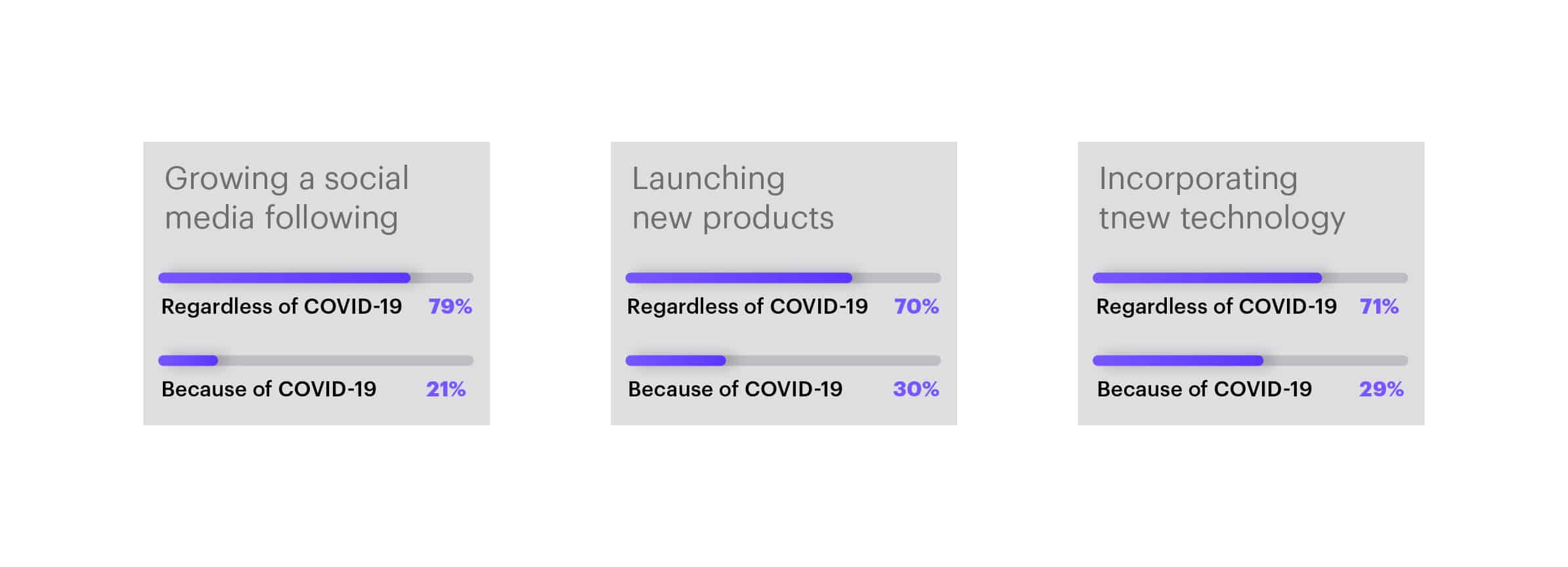
So while the pandemic has clearly changed how ecommerce stores operate, COVID-19 does not seem to have altered stores’ goals and initiatives for the year across the board.But even as stores’ initiatives and goals for the year remain constant despite COVID-19, store owners cite addressing COVID-19 concerns — such as supply chain management, addressing employee concerns, implementing remote policies and technology, resolving customer concerns, etc. — as the number one task that’s coming between them and their key priorities.

4. More Store Owners Are Utilizing Automation to Enable Them to Do More
One of the key differences between what ecommerce store owners told CM Commerce earlier this year and more recently relates to how they solve bandwidth limitations. Before COVID-19, the majority of respondents — 30% — said they solved bandwidth issues by simply doing more.
By June, using technology to automate processes has become the most common response. As the team stated earlier this year, eventually store owners will run out of bandwidth and doing more would no longer be a viable solution.
With the rise of COVID-19 and the changes it’s caused — lost revenue, fewer employees, more tasks, operating fully online — automation has become store owners’ go-to solution.
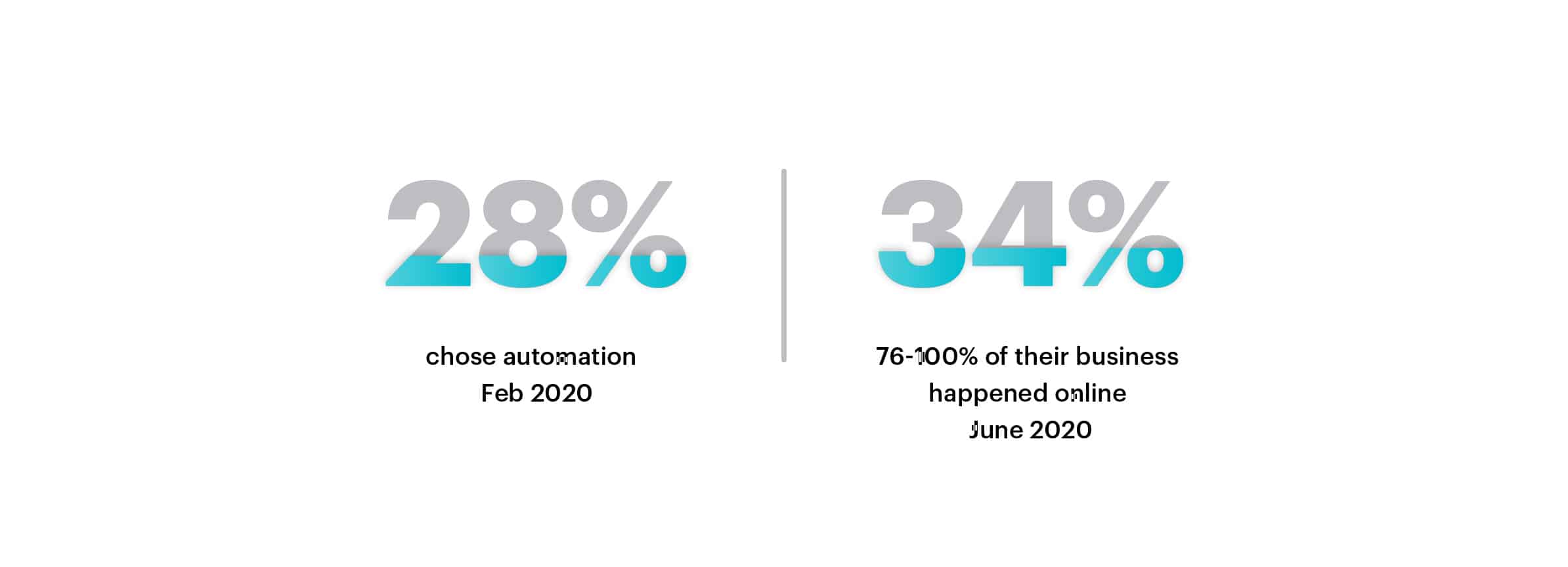
In a similar vein, store owners are working fewer hours than they were before COVID-19. While it’s impossible to say exactly what has caused this shift, it’s easy to see that offloading tasks to automation would result in fewer hours worked than taking on more themselves — the way many store owners were managing their workload before COVID-19.
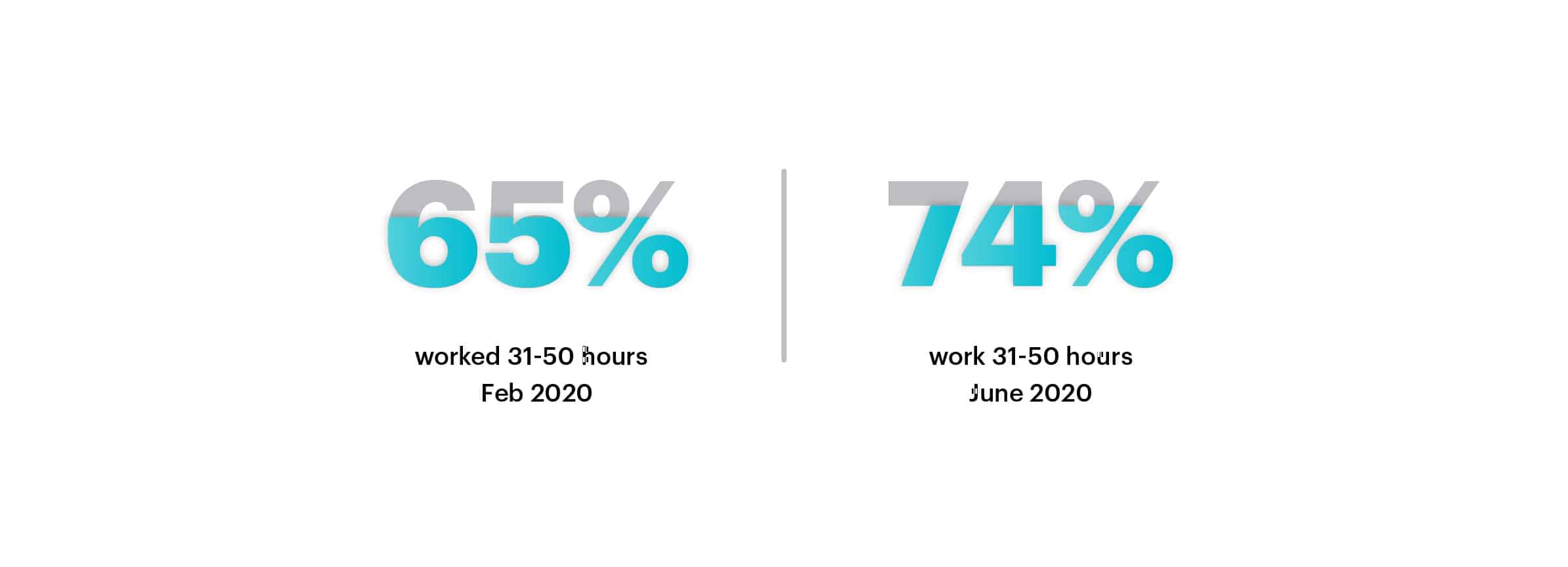
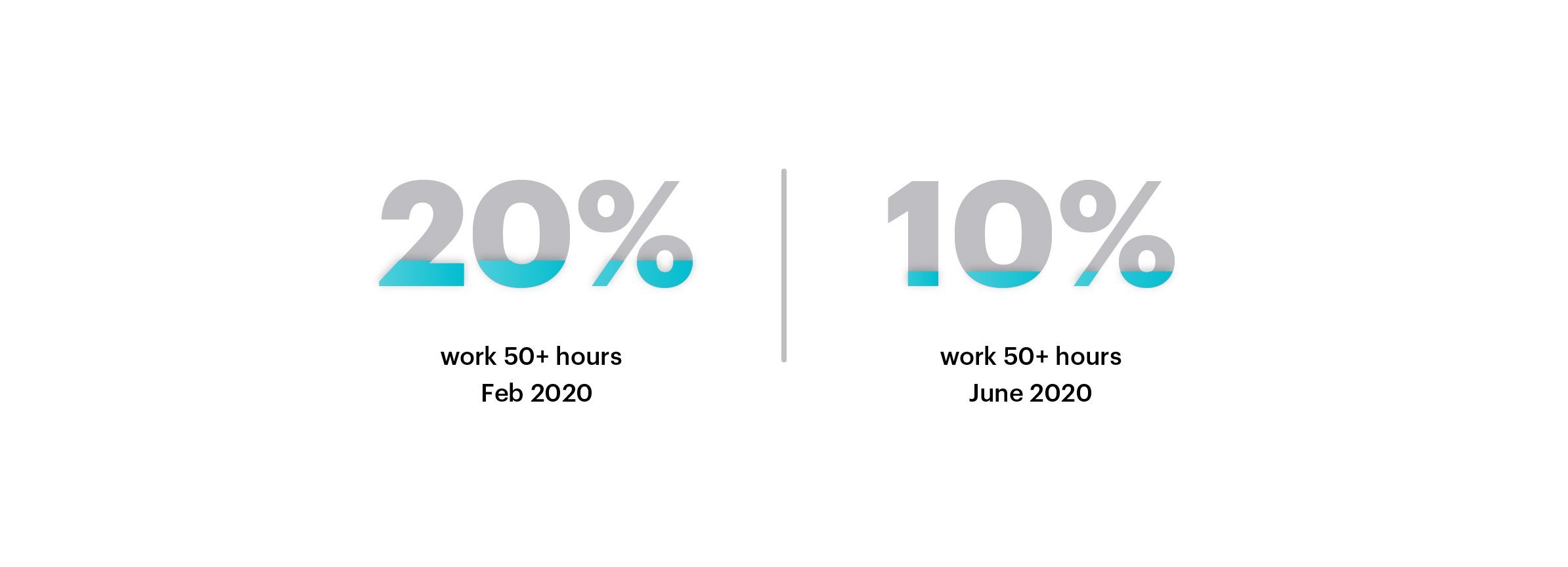
5. Addressing Coronavirus-Specific Initiatives Is Consuming A Lot of Store Owners’ Time
Store owners said that addressing coronavirus-specific concerns is consuming much of their time, keeping them so busy they have little time left to devote to their highest priority initiatives. It turns out that 32% of store owners are spending between one-quarter and half their days working on COVID-19 tasks. As many as 9% are spending virtually all of their days on tasks directly related to the coronavirus.
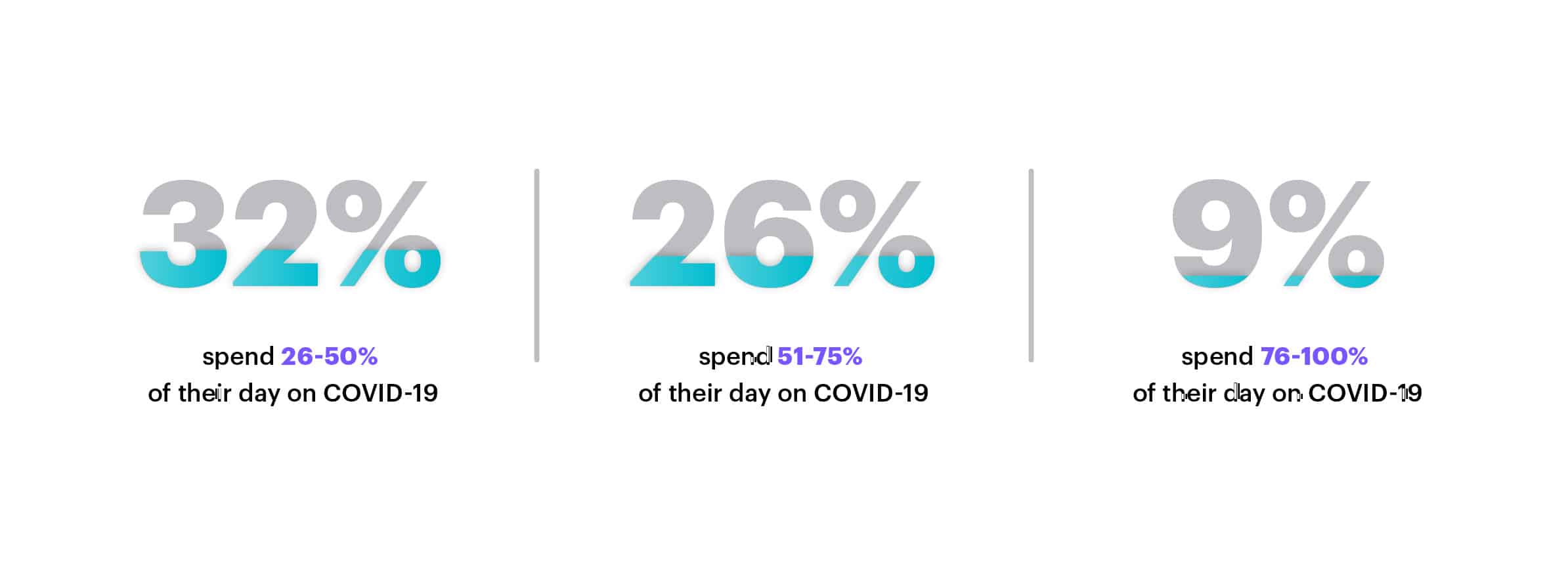
The most time-consuming of these tasks? Creating new policies and processes to keep employees and customers safe. The second most time-consuming is implementing remote policies and technology, showing another reason why store owners showed such a greater emphasis on IT during this time.
6. Loss of Revenue Is a Major Challenge
This will come as no surprise to store owners. While transitioning to 100% online work was the biggest challenge, loss of revenue came in as the second biggest issue facing store owners in a world still grappling with COVID-19.
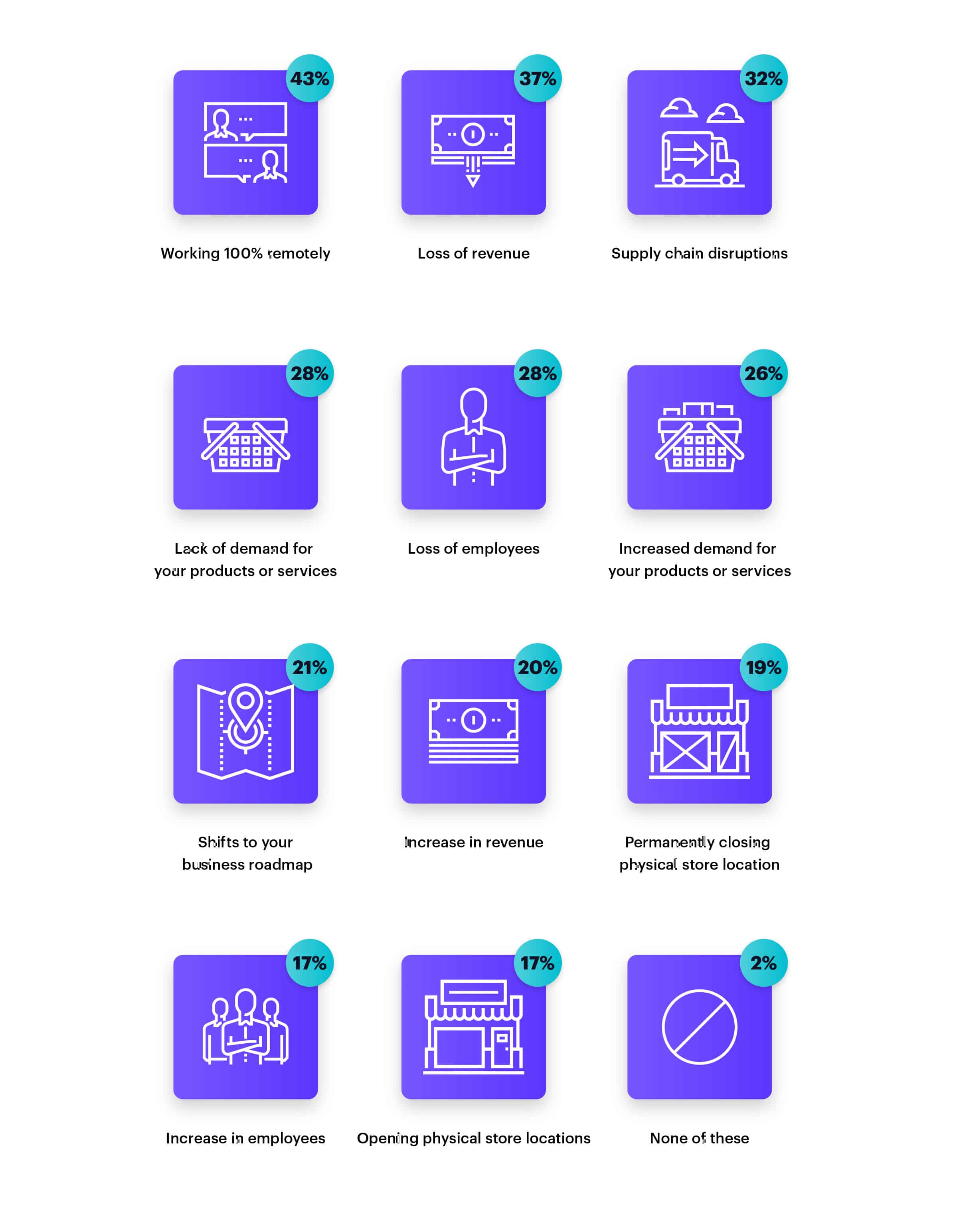
Amid this loss of revenue, more than half of the store owners surveyed have applied for some of the small business relief. More surprising is the 38% that have not.
7. Store Owners Have Adapted How They Communicate with Employees and Customers
Social media is the number one way store owners communicate with customers, sharing important updates on how they’re reacting to the ever-changing news cycle. People are also relying more on online meetings via Zoom and Hangouts to stay in touch and build that personal connection customers want.
Email newsletters ranked as the third most effective way for store owners to communicate with customers, but 68% of the store owners CM Commerce surveyed said email has become more important than it was before COVID-19.
Hopeful
Despite everything that’s happened in the course of 2020, store owners’ predominant feeling is hope. When looking back at the past three months, they experience a mix of emotions, but they predominantly feel hopeful, anxious, and determined.
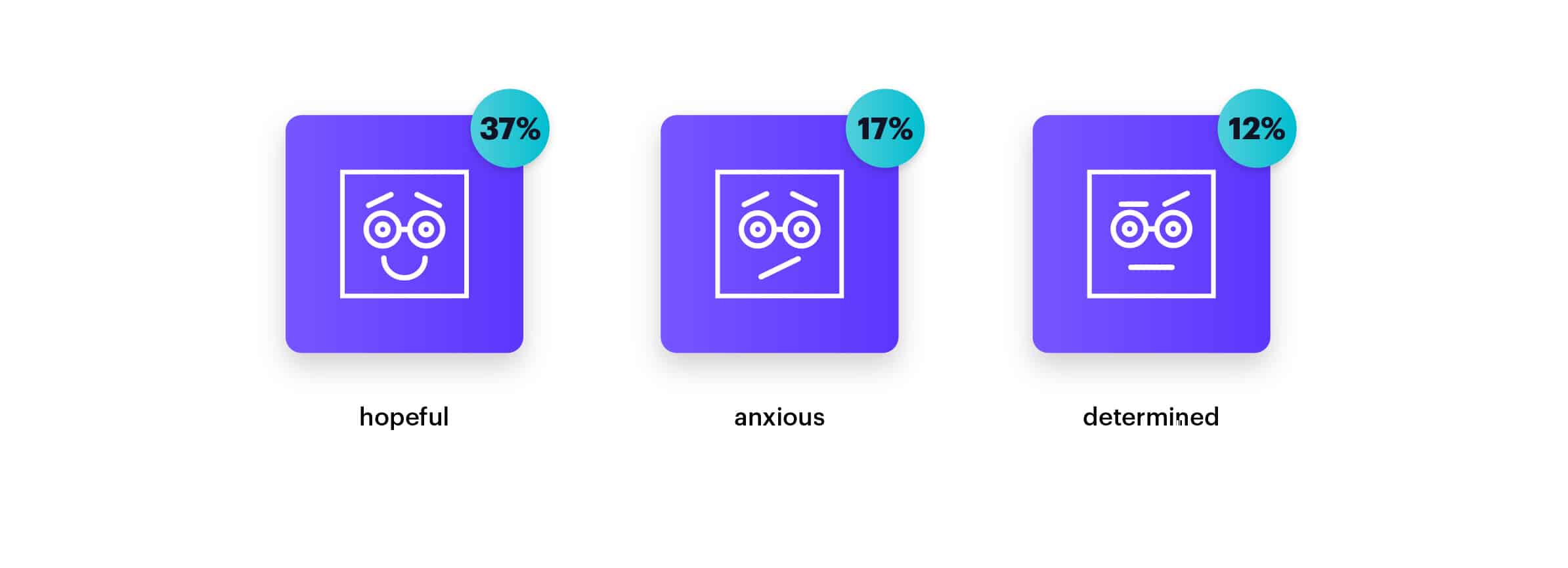
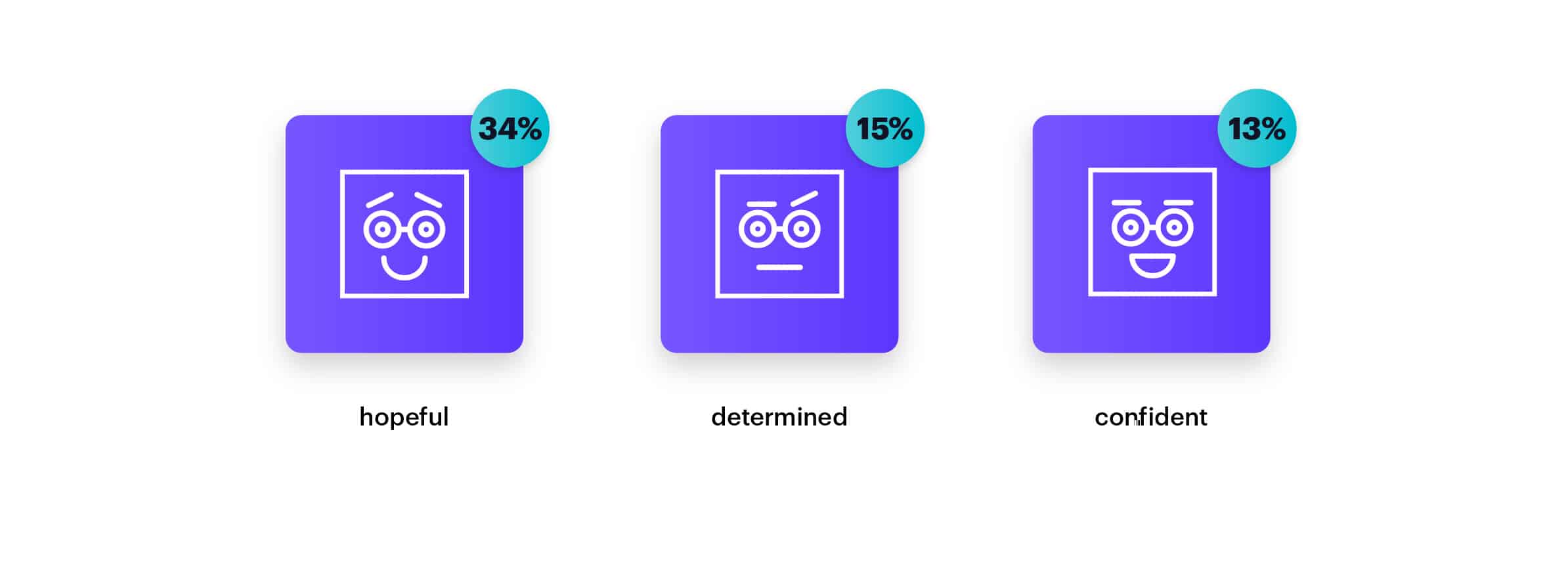
When asked about the current state of the economy, store owners are more discouraged. While hopeful is still the primary emotion, they also feel anxious and scared.
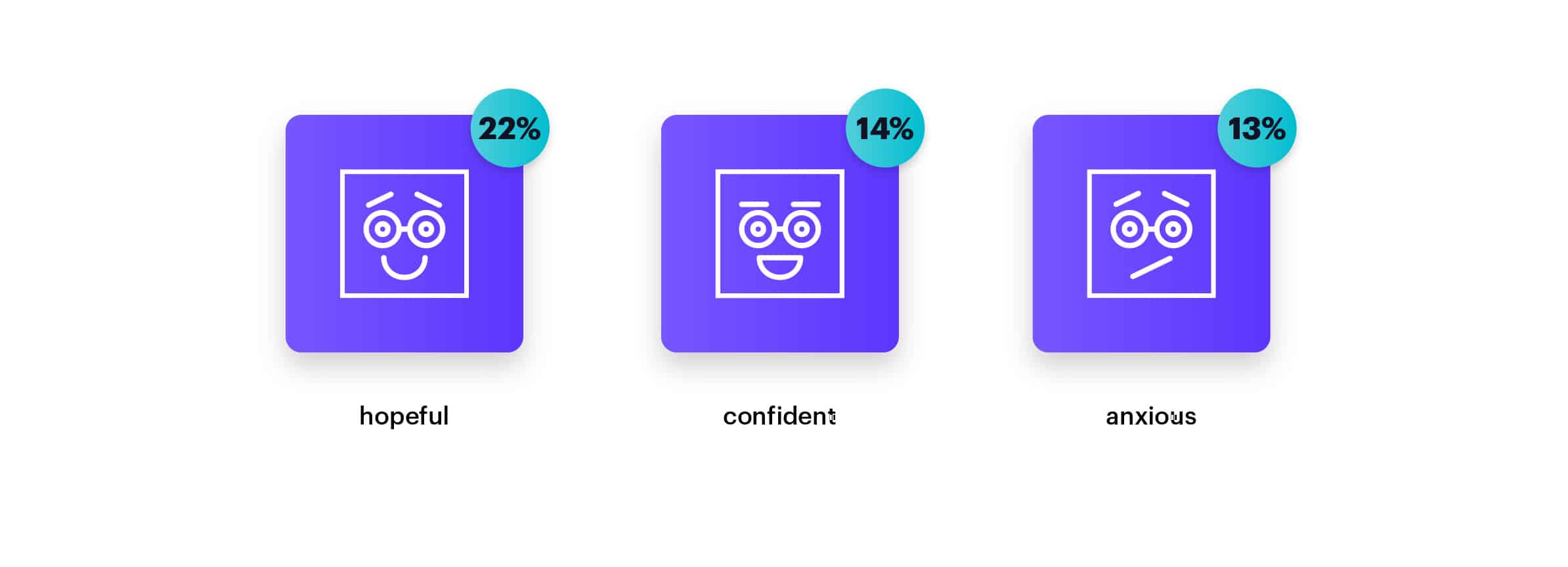
When store owners look forward to the uncertain future of the economy, they feel primarily hopeful and confident, though also anxious.
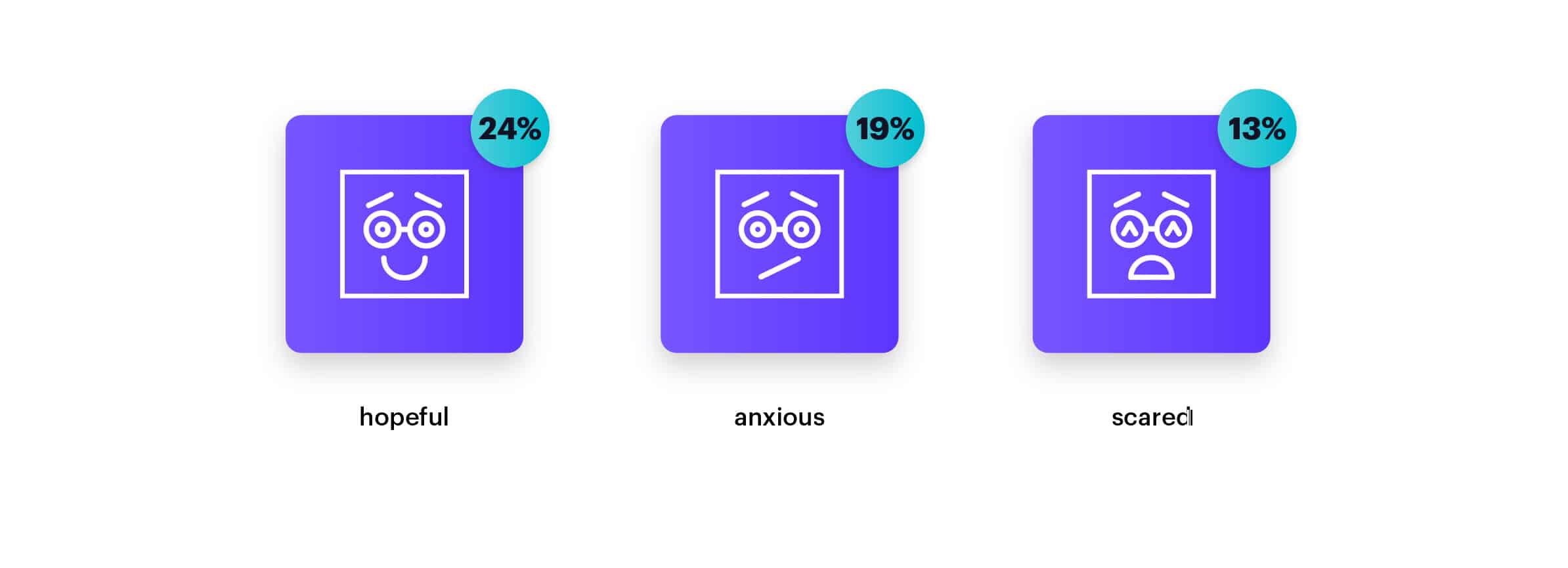
Now that we’ve been living in a COVID-19 world for some months, store owners have adjusted. They’ve incorporated new technologies and built a strategy for a fully digital world. Slowly, the unknown becomes the norm, and store owners feel more and more confident in their ability to thrive in an uncertain future.
These results show us that while COVID-19 has changed how ecommerce store owners operate, it hasn’t changed what they want to achieve. Stores continue to pursue growth and cultivating a relationship with customers. Now more than ever, getting to know customers will help stores build relationships that persevere through hard times and uncertain waters.
About CM Commerce
One of Marigold Engage by Sailthru’s sister companies within the Marigold family of brands, CM Commerce was built from the popular ecommerce platform Conversio, CM Commerce helps retailers overcome the specific ecommerce challenges faced in their growth process by giving them the ability to easily create professional, automated email campaigns that streamline engagement throughout the customer lifecycle, increase conversions and build trustworthy brands.
The State of Brand Loyalty in the U.S. in 2023
Related

